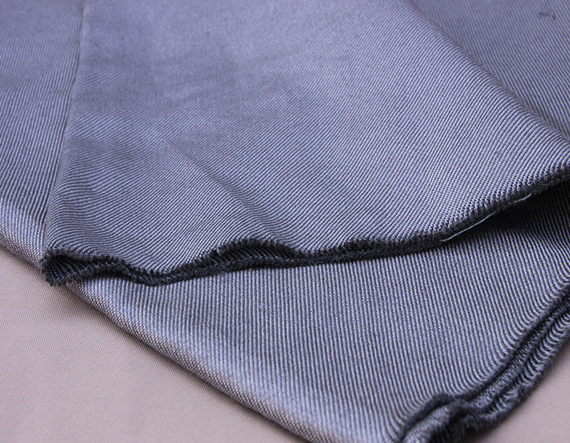In the realm of textiles, there exists a remarkable innovation that combines functionality with style-conductive fabrics. These extraordinary materials possess unique characteristics that have revolutionized numerous industries, from fashion and healthcare to technology and sports. In this comprehensive article, we delve into the fascinating world of conductive fabrics, exploring their properties, applications, and the benefits they offer. Join us on this captivating journey as we unlock the wonders of conductive fabrics and understand why they are becoming increasingly sought after in the modern era.
Conductive fabrics, also known as smart textiles, are textiles that have been engineered to possess electrical conductivity. Unlike traditional fabrics, which are primarily passive in nature, conductive fabrics actively interact with their environment through the transmission of electrical signals. This unique property is achieved by incorporating conductive elements, such as metal fibers or conductive polymers, into the fabric structure.
1. Electrical Conductivity
The defining characteristic of conductive fabrics is their ability to conduct electricity. These fabrics exhibit low resistance and can effectively transmit electrical signals across their surface. This property opens up a multitude of possibilities for various applications, ranging from wearable technology to electromagnetic shielding.
2. Flexibility and Durability
Conductive fabrics are designed to be flexible, allowing them to conform to different shapes and movements. This flexibility makes them ideal for applications that require conformable and stretchable materials, such as smart clothing and wearable sensors. Despite their pliability, conductive fabrics also possess remarkable durability, ensuring they can withstand repeated use and maintain their functionality over time.
3. Breathability and Comfort
One might assume that incorporating conductive elements into fabrics would compromise their breathability and comfort. However, modern advancements in textile engineering have successfully overcome this challenge. Conductive fabrics can now be designed with enhanced breathability, ensuring optimal comfort for the wearer. This feature is particularly crucial in applications where extended use is required, such as sports apparel and medical garments.
4. Sensing Capabilities
Another remarkable characteristic of conductive fabrics is their ability to sense and respond to external stimuli. By integrating sensors into the fabric structure, these textiles can detect various parameters such as temperature, pressure, and moisture. This sensing capability has led to the development of smart textiles that can monitor vital signs, track movement, and provide valuable data for medical diagnostics, sports performance analysis, and more.
5. Versatility and Customizability
Conductive fabrics offer a high degree of versatility and customizability, allowing designers and manufacturers to tailor their properties to specific requirements. The choice of conductive materials, fabric structures, and integration methods provides endless possibilities for creating unique and innovative solutions. This adaptability has propelled conductive fabrics into diverse industries, including fashion, automotive, aerospace, and architecture.
The remarkable characteristics of conductive fabrics have paved the way for a myriad of applications across various sectors. Here are just a few examples of how conductive fabrics are transforming industries:
1. Smart Clothing and Wearable Technology
Conductive fabrics are at the forefront of the wearable technology revolution. They enable the integration of sensors, actuators, and connectivity into clothing, making way for smart garments that can monitor health parameters, track physical activity, and even charge electronic devices. From fitness trackers to temperature-regulating jackets, conductive fabrics are redefining the way we interact with our clothing.
2. Medical and Healthcare
In the field of healthcare, conductive fabrics have proven to be invaluable. These fabrics can be used to create smart bandages that monitor wound healing, wearable sensors for remote patient monitoring, and even electrodes for non-invasive medical procedures. Conductive fabrics are also being explored for their antimicrobial properties, which can help prevent infections and improve patient outcomes.
3. Electromagnetic Shielding
Conductive fabrics play a crucial role in shielding against electromagnetic interference (EMI). They can be used to create protective garments, curtains, and enclosures that safeguard sensitive electronic devices from unwanted signals. This application is particularly significant in industries such as aerospace, defense, and telecommunications, where the reliability of electronic systems is paramount.
4. Energy and Power
Conductive fabrics are being harnessed for their potential in energy generation and storage. By integrating energy-harvesting technologies into textiles, conductive fabrics can capture and convert ambient energy, such as body heat or mechanical vibrations, into electrical energy. This innovation holds promise for powering small electronic devices and reducing our reliance on conventional batteries.
Conductive fabrics represent a paradigm shift in the world of textiles, bridging the gap between fashion, technology, and functionality. Their exceptional characteristics, including electrical conductivity, flexibility, breathability, sensing capabilities, and customizability, have propelled them to the forefront of innovation across numerous industries. As we continue to unlock the full potential of conductive fabrics, we can anticipate a future where our clothing not only adorns us but also enhances our lives in unprecedented ways. We are a conductive fabrics supplier. If you are interested in our products, please contact us now!

Copyright © Xiongxian texcraf Technology Co., LTD. All Rights Reserved | Sitemap